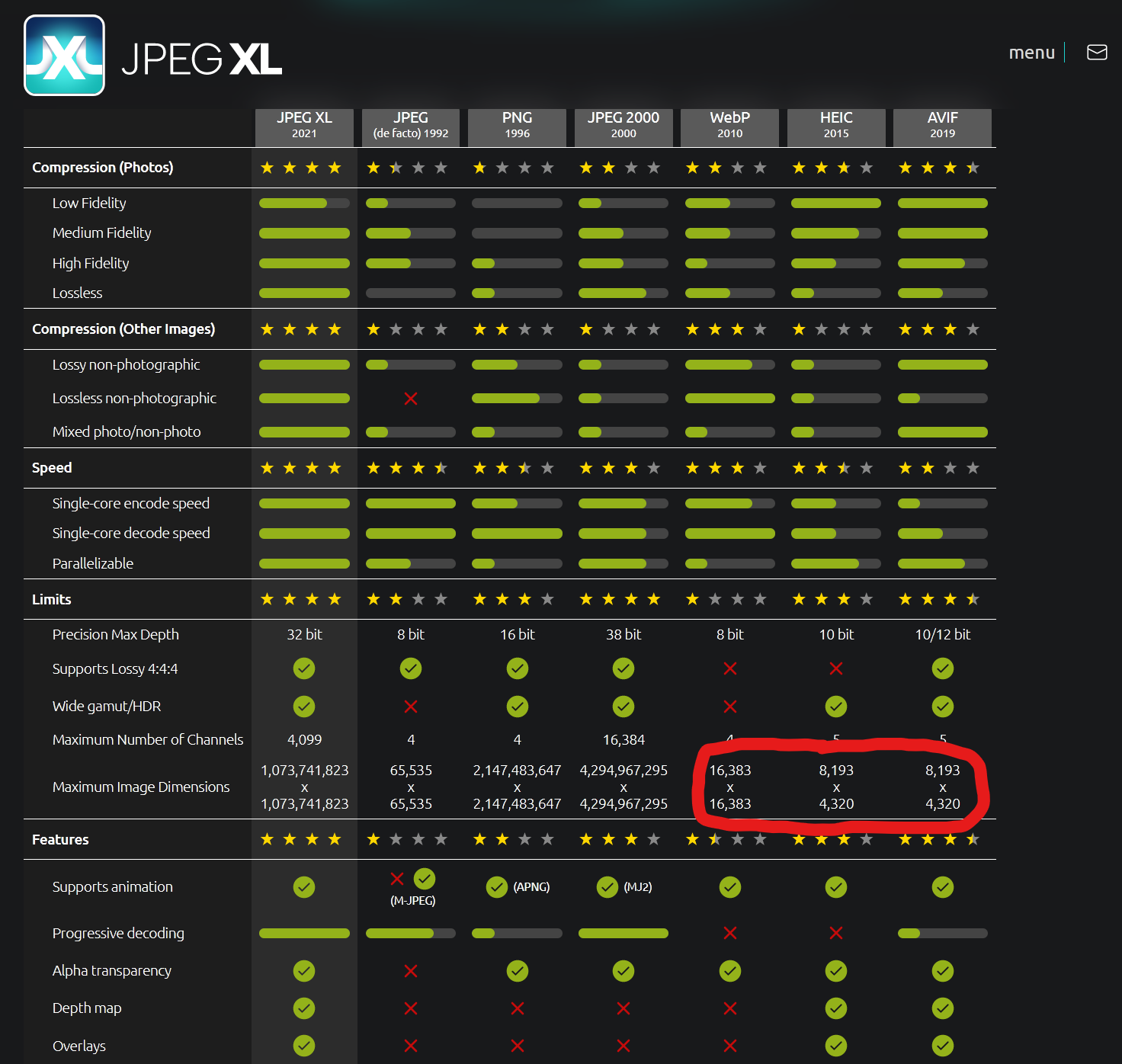This demonstrates quite well why low-effort image codecs are dead on arrival. And the explanation is quite simple — these aren't really image codecs, they were never designed to be that! These are video codecs applied to static images disguised as brand new image codecs: #WebP is VP9, HEIF is HEVC also known as H.265 and AVIF is AV1.
And indeed, for video even 8193x4320 leaves some headroom — not for photos, given how having a high-resolution camera system became a major selling point of high-end smartphones, even 16383x16383 might seem lacking tomorrow.
Or course this can be worked around as to a degree all of these are extensible, e.g. AVIF has advanced profile: https://en.wikipedia.org/wiki/AVIF#Profiles
According to Wikipedia:
So why bother supporting all this bestiary of formats, which are essentially gimmicks and not go all in with true image codec that has all the advantages and features and none of the limitations?
Hm-m-m… Indeed, why? 😏
#JPEG-XL
And indeed, for video even 8193x4320 leaves some headroom — not for photos, given how having a high-resolution camera system became a major selling point of high-end smartphones, even 16383x16383 might seem lacking tomorrow.
Or course this can be worked around as to a degree all of these are extensible, e.g. AVIF has advanced profile: https://en.wikipedia.org/wiki/AVIF#Profiles
According to Wikipedia:
Coded image items compliant to the AVIF Advanced profile may not have a total number of pixels greater than 35,651,584, a width greater than 16,384, or a height greater than 8,704. It is still possible to use the Advanced profile to create larger images using grid derivation.
So why bother supporting all this bestiary of formats, which are essentially gimmicks and not go all in with true image codec that has all the advantages and features and none of the limitations?
Hm-m-m… Indeed, why? 😏
#JPEG-XL
